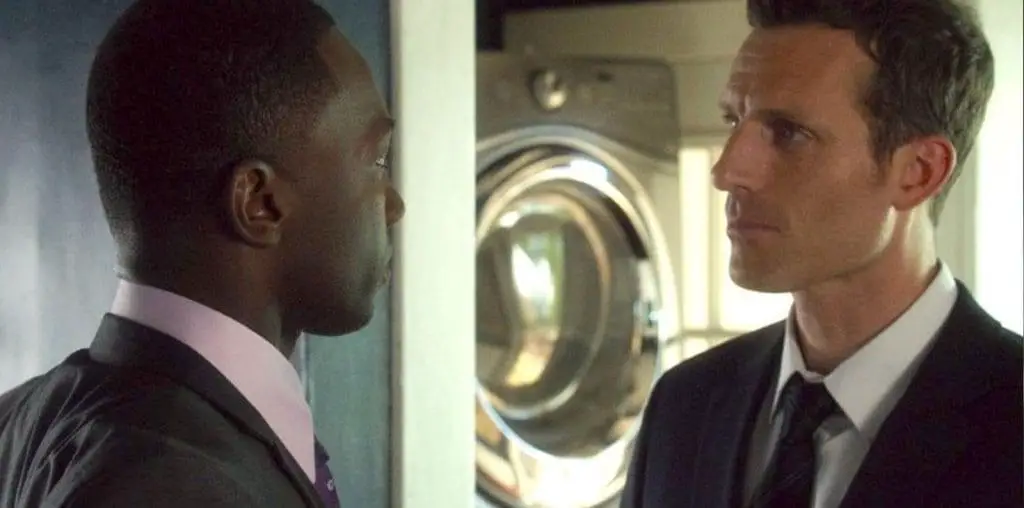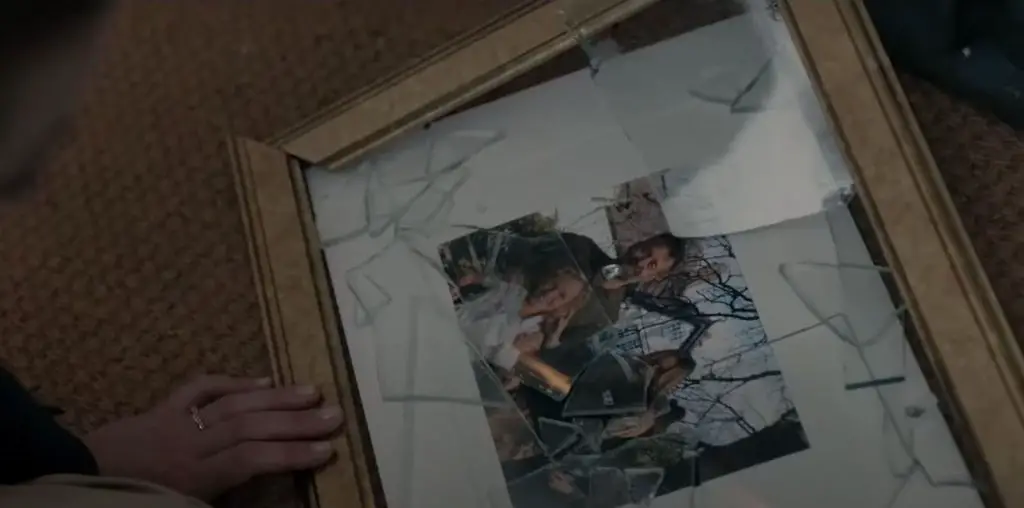
Director: Jean Claude Lord
Writer: Brian Taggart
Starring: Lee Grant, Michael Ironside, Linda Purl, William Shatner, Lenore Zann
Of the many horror subgenres, there is little debate that the ruler of the eighties was the slasher. While the roots of the subgenre can be traced back to the giallo thrillers of 1970’s Italy, most would cite John Carpenter’s “Halloween” as the blueprint from which a stream of lesser fright flicks emerged. Many of these imitators were shot in Canada, often with CFDC money, including “Prom Night,” “Happy Birthday to Me,” “My Bloody Valentine,” and this week’s Classick: “Visiting Hours.”
That the slasher, often seen as a quintessentially American invention, should have taken such a hold in Canada is not surprising considering Carpenter’s admiration for honorary Canadian Bob Clark’s “Black Christmas,” made two years before “Halloween.” Slasher films are also incredibly inexpensive to produce, requiring little more than a bunch of kids (bonus points if you can get a couple of them to take their tops off), a building for the youngsters to run around in, a big scary guy to wield a prop knife, and enough Karo syrup to risk not getting an R rating. And while most of these “Halloween” imitators are merely cheap attempts to cash in on a trend, “Visiting Hours” manages to distinguish itself by infusing the film with surprisingly strong feminist overtones.
The whole concept of a “feminist slasher” would strike most people as being an even greater oxymoron than “military intelligence,” but it’s the sort of high-concept horror that Canadians tend to excel at. Which is not to say that “Visiting Hours” is any sort of masterpiece, but the themes of female solidarity, sexual abuse, and the media are treated intelligently enough to distinguish the film from it’s sillier, more cynical brethren.
Shot over 2 weeks in the fall of 1980 with a rather healthy budget of $5,500,000, “Visiting Hours” was the first English language film directed by Jean-Claude Lord. Lord is probably best known in his native Québec for the TV series “Lance et compte (“He Shoots, He Scores” in English), which was a huge hit, as well as Francophone films like “Bingo” And “Éclair au chocolat.” He also directed “Le genouille et la baleine” (“The Frog and the Whale”), part of the popular “Contes pour tous” children’s films series, “Eddie and the Cruisers II,” and “Terminator” rip-off “The Vindicator,” starring Maury Chaykin.
Writer Brian Taggart has a similarly spotty filmography of TV movies, “Poltergeist III” and Canadian giant rat film “Of Unknown Origin.” While none of this seems to bode all that well for the film, it is nearly saved by surprisingly steady direction and a trio of excellent performances, namely Lee Grant, fresh off her Oscar win for “Shampoo,” Linda Purl from “Happy Days,” and nature’s most perfect bad-a*s (and Canadian), Michael Ironside.
Purl plays Deborah, a successful TV journalist, feminist, and staunch defender of abused women. She is brash and confrontational, but blessedly never shrill. The producer of her show is played with expected histrionic excess by Canada’s own William Shatner, and his over-the-top performance is especially odd considering how little his character is given to do. In fact, in keeping with the “girl power” theme of the film, all of the male characters with any authority are portrayed as completely ineffectual. But, as usual, it doesn’t really seem like Shatner picked up on that. He does, however, repeatedly tell Deborah that he is concerned that being a strong women will get her in trouble with someone violent and is predictably unsympathetic when that is exactly what happens.
After a particularly grueling interview, Deborah returns to her impossibly huge house to find that her incompetent housekeeper has once again failed to complete even the most mundane of tasks and the camera follows her as she winds through the entire house, picking up dirty dishes and complaining to herself. The catch, of course, is that we already know that there is someone in the house, although his location is not revealed until much, much later. One would assume that prolonging the big scare for this long would only lead to disappointment for fright fans, but it is so bizarre and unsettling when it does happen that even if you don’t actually jump, it does burn an image in your mind. That particular image is of a soaking wet, naked Michael Ironside covered in women’s jewelry (we’re talking face, head, neck) jumping out of a closet with a huge knife.
After an equally long chase through the house wherein Deborah suffers multiple slash wounds to her arms, a neighbor eventually comes to her aid and takes her to the hospital. Her attacker, Colt (Ironside), then uses one of his many disguises to sneak into the hospital to try to finish the job, but only manages to off an old woman. However, in the hospital we are introduced to kindly nurse and single mom Sheila (Purl) who, for reasons that are never really explained, has taken a special interest in Deborah. The film then oscillates between Sheila, Deborah, and Colt, showing us glimpses into each of their lives, including Colt’s wall of media complaint letters and death photo trophies.
We also get flashbacks to Colt’s childhood, showing the abuse he and his mother suffered at the hands of his father, a now broken old man that Colt must care for. These attempts at creating a psychological profile, as well as Ironside’s chilling, stone-faced performance, manage to make Colt a terrifying misogynist rather than another dime-a-dozen woman-killer. There is also a bizarre scene where Colt lures a young girl to his apartment to rape her, all while wearing a leather bodice/shirt that squeaks when he rubs against the wall as he assaults the girl. Not surprisingly, Ironside apparently received a number of marriage proposals in the mail shortly after the release of “Visiting Hours.”
While this scene at first seems a rather crass way of showing Colt’s brutality, it ends up being quite pivotal to the plot as the girl, Lisa (Lenore Zann), encounters nurse Sheila at the free clinic where Sheila volunteers once a week. Although initially reticent, Lisa eventually ends up sharing crucial information about the identity of her attacker that leads to a raid on his house. However, being the enterprising psycho he is, Colt is actually at Sheila’s house and we get a horrifying scene of him attacking and stabbing her while her baby girl wails in the background.
Having almost killed the nurse, Colt then returns to his original mission of trying to kill Deborah and manages to sneak into the hospital yet again. Another extended chase ensues, but despite her injuries and residual trauma, Deborah refuses to be a victim and fights back just as hard as she did the first time. Eventually she is forced to go back on her original stance of non-violence and stabs Colt in the gut with his own knife.
At 112 mins, “Visiting Hours” is rather long for a slasher film, but because of the way the film continually switches the focus from Grant to Ironside to Purl and back, it’s easy not to notice. While it does sometimes overuse the red herring scares, there is generally enough tension to pull you through and it does manage to be surprisingly suspenseful for most of the film. Heavy use of P.O.V. shots and Ironside’s ice-blood performance also help to ratchet up viewer anxiety.
While most reviews have focused on how the idea of feminism is at odds with the violence in the film, the principles of feminism are actually crucial to the plot and make it somewhat more interesting than most films of this ilk. Because most of the men in the film are presented as such incompetent dolts, the women are pretty much forced to band together to bring Colt down. While this doesn’t result in a “Death Proof” style gang-stomping, this “sorority spirit” actually makes the film much more feminist than if they had all just resorted to vigilante violence. That Deborah has to compromise her values in order to survive is clearly not the point. She is, in fact, the only person capable of taking him down, precisely because she is a woman.
Next week: Early, non-horror Cronenberg: “Fast Company”
In the 70’s and 80’s, the Canadian government introduced new tax laws in an effort to boost domestic film production, which at that point was virtually non existent. The results were, sadly, not exactly what the politicos had intended, but instead a steady stream of cheap and often tawdry exploitation pics came rushing forth from “Hollywood North”. Canadian Classicks is a look at some of the gems and turds from the so called “tax shelter period”, as well as a place to celebrate (or shame) contemporary contributors to the Canadian exploitation legacy.

